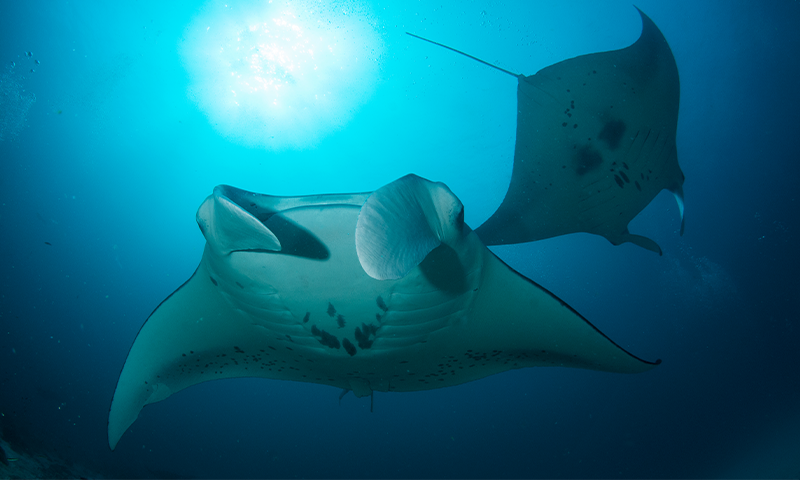Now Reading: Graceful Manta Rays Spotted in Action
-
01
Graceful Manta Rays Spotted in Action
Graceful Manta Rays Spotted in Action

Swift Summary
- A 92-year-old woman named Evelyne Beaulieu, a renowned diver and researcher dedicated to ocean conservation, dove off a 5-meter dive boat in the South Pacific near the Tuamotus islands.
- Evie’s life mission is to advocate for marine life and biodiversity through her books. Her current focus is on creating wonder and fostering love for oceanic creatures.
- During her dive, she encountered reef manta rays (Mobula alfredi) at a cleaning station, recognizing many familiar individuals based on their distinct patterns.
- She also had an extraordinary interaction with a giant oceanic manta ray (Mobula birostris), which exhibited behaviors suggestive of play-engaging with air bubbles she released underwater.
- Manta rays possess advanced cognitive abilities, including self-recognition in mirrors and high brain-to-body ratios indicative of complex thought processes.
- The species faces meaningful threats from poaching due to demand for gill plates in markets like Guangzhou; this has contributed to declining populations across the Pacific.
Read More: Manta Rays at Play
Indian Opinion Analysis
The narrative underscores profound insights into marine biodiversity and human impact on ecosystems. With manta rays facing pressures from illegal fishing-a plight echoed across global waters-it highlights the urgent need for conservation efforts.For India, a nation with expansive coastal zones teeming with diverse marine life, safeguarding such ecosystems assumes critical meaning.
India’s coastal communities rely on sustainable fishing practices tightly intertwined with environmental stewardship. As illegal ventures escalate globally (e.g., poaching or overfishing), India’s enforcement mechanisms must strengthen against transnational networks depleting shared resources like migratory species akin to these mantas.
Moreover, Evelyne Beaulieu’s work exemplifies how storytelling can galvanize appreciation for nature’s ingenuity-a model India could adopt by merging ecological storytelling with policy-backed campaigns to preserve its natural heritage while harmonizing developmental advances along coastal belts.

























